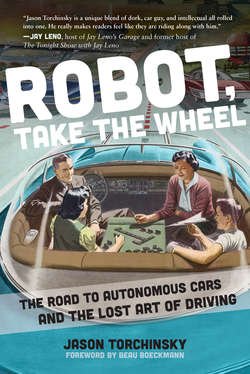Читать книгу Robot, Take the Wheel - Jason Torchinsky - Страница 23
На сайте Литреса книга снята с продажи.
1961 to 1979: The Stanford Cart
ОглавлениеWhile not designed to actually carry passengers and not exactly a car, as such, the humble Stanford Cart could be considered the real start of modern autonomous car technology. The Stanford Cart was just what it sounds like: a little, wheeled cart, sort of a small table with wheels, developed at Stanford University.
The cart was originally a test platform to study how to possibly remotely control a lunar rover from Earth. The Jet Propulsion Laboratory was developing a lunar rover that would be controlled by radio signals from Earth, and information sent back from a television camera. Grad student James Adams built the cart in 1961 to simulate the rover, taking into account the 2.5-second delay in the signals going to and coming back from the moon. He was able to prove that with the delay, the rover would not be reliably controllable at speeds over 0.2 mph, which is, as you can guess, really, really slow.17
To overcome this, experiments began to attempt to give the cart its own ability to “see” its environment, detect obstacles, and take steps to avoid them. This was the birth of nearly all computer vision systems employed by autonomous vehicles (and, really, any robot that uses some manner of camera-based synthetic vision) today.
By 1964 the cart had been re-outfitted with a low-power television transmitter that broadcast TV signals to a PDP-618 computer to process the images. With this setup, which I’m dramatically simplifying here, the cart was able to visually follow a high-contrast white line on the road at about 0.8 mph. This was a big deal, as it represented real computer vision controlling a moving machine, even if it was quite crude.
Development continued on the cart with new researchers and students re-outfitting the cart as new ideas and technologies became available. In 1977, the cart was upgraded with faster processors, an independently mobile camera, and four-wheel steering; in this configuration it was able to drive around obstacles in a controlled environment.
Sure, it only moved three feet at a time and then had to pause to figure out what it was looking at, but this was a gigantic leap in robotics. The cart was eventually able to navigate a chair-filled room in about five hours, and while it may be tempting to laugh at that idea now, I can think of plenty of times I’ve not been able to navigate a chair-filled room without running into half the chairs and looking like an idiot.
